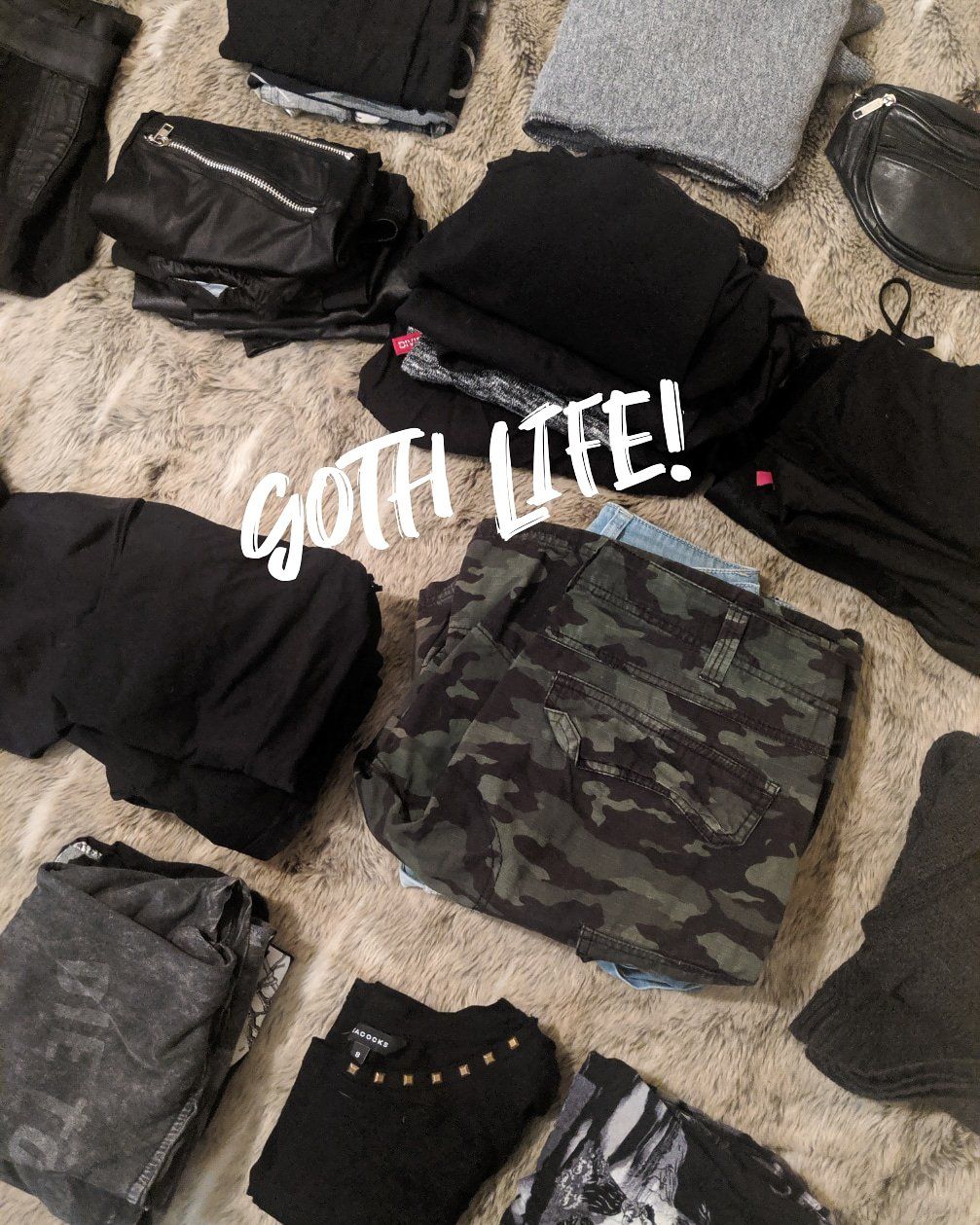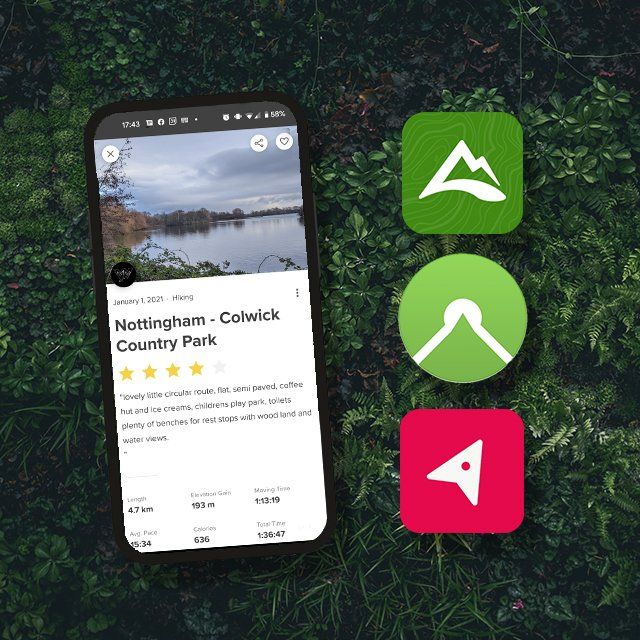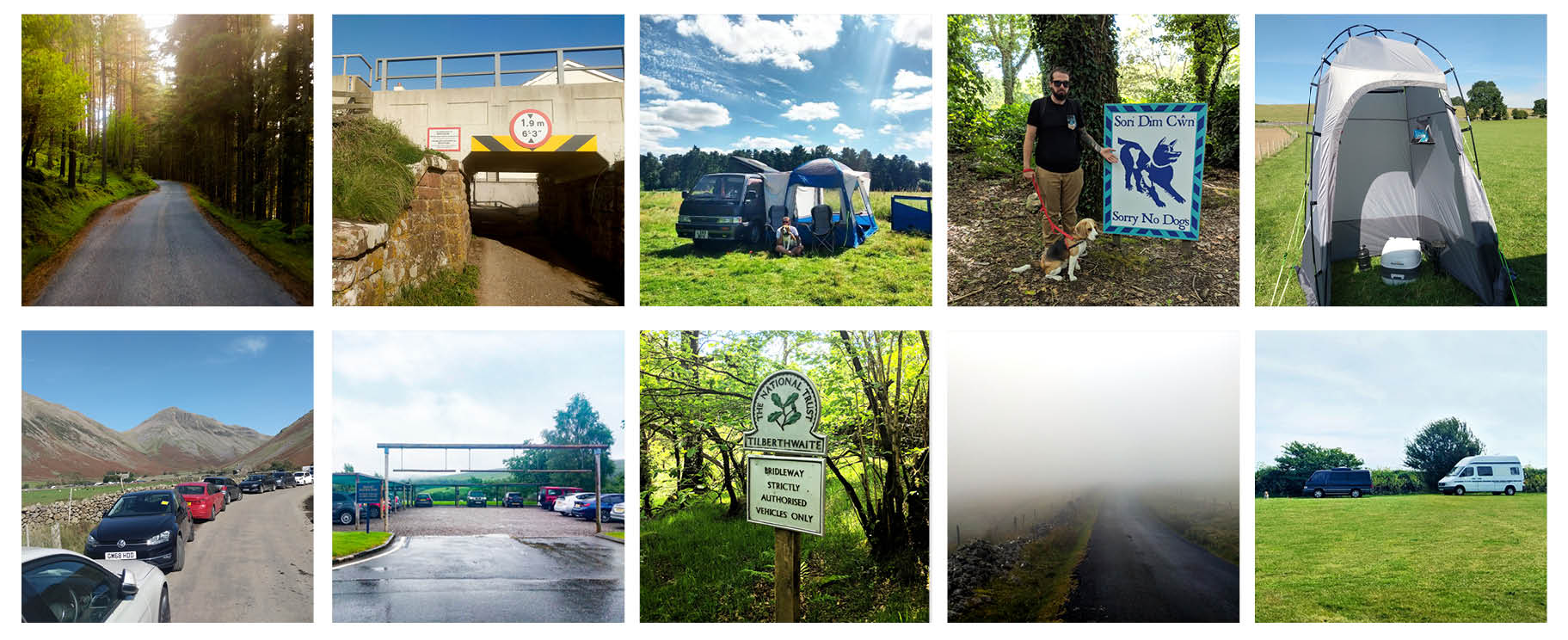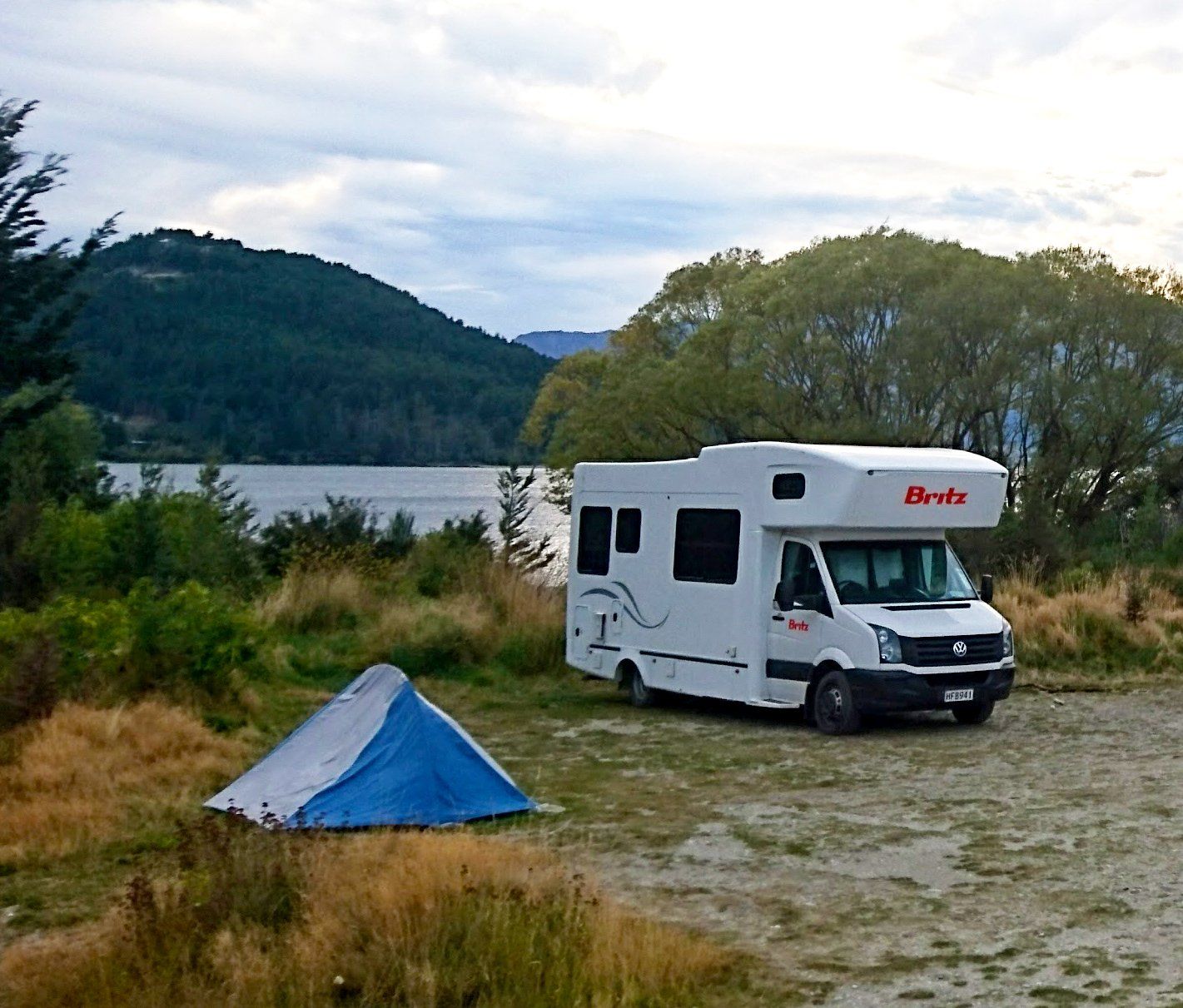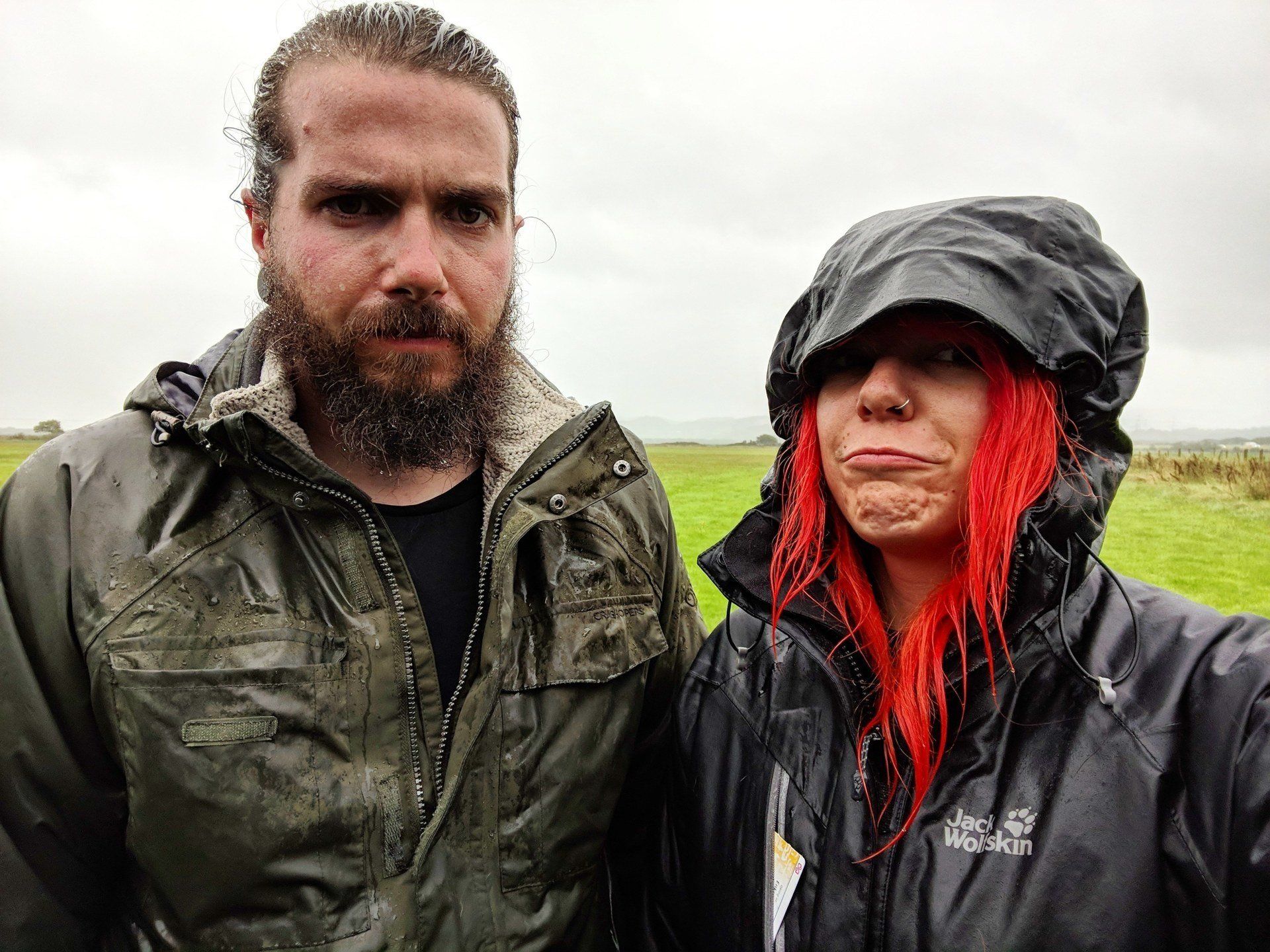TOP 5 CARAVAN TO CAMPERVAN TIPS
I've been in caravans (and tents) since I can remember, but a few years ago we bought our first campervan..
The main differences between the two - other than not having to worry about towing! - is the size/ living and storage space available and the lack of an alternate vehicle. I personally feel like these two factors go hand in hand in terms of how they can affect the way you 'travel' or explore. This is because if you chose to go with a larger sized van for more storage space - you may then be limiting yourself on how easy it is to get around sightseeing – so it's definitely worth bearing in mind how you intend to use the vehicle when choosing the size of your vehicle. More on that here.
Other aspects of 'vanlife' are pretty similar, to 'caravan life' and mostly depends on your style/spec of the vehicle rather than whether it has an engine or not. Below are our top tips for new campervan owners - as well as going a bit deeper into the why's and how's - Hope it's helpful🙂
DISCLAIMER: this is for the UK - if COVID is ever lifted and we're able to travel abroad again – I will update accordingly with our findings for travel abroad.
TOP TIP 1:
Choose your vehicle size based on how you want to travel as well as your needs
TOP TIP 2:
Research the route - narrow roads, steep hills, parking facilities
TOP TIP 3:
Plan in advance - not just the campsites, but the sights and the shop stops too
TOP TIP 4:
Invest in a good Awning
TOP TIP 5:
Learn to live 'ready to go'
TOP TIP 1:
Choose your vehicle size based on how you want to travel as well as your needs
If you are still looking around and haven't yet decided on a vehicle - seriously think about what and how you are likely to need to travel and explore - as there are loads of options to choose from and a multitude of sizes, but bigger isn’t always better.
Above I mentioned the main difference between caravans and campervans/motorhomes being that you don't have a small nippy vehicle to travel about in, and on the various tips below I highlight key changes to make this easier. But all of that is pointless if your vehicle isn't 'practicable' and manoeuvrable for your needs.
Yes with having a caravan prior you'd be used to certain 'comforts' such as a bathroom, oven and wardrobes - so you may think you want something of similar stature - however if you thought towing was pickle due to length height and parking limitations - imagine having to account for that for EVERY trip out you make during your time away.
You may also be surprised as to what you do get with the smaller vehicles, for example - in our little van we have; an onboard water tank, 2 ring gas burner hob, oven/grill, hot water option, heating, leisure battery, 240 hook up, food cupboard, pots and pans storage, and a mini wardrobe.
Or even wish to sacrifice some of these comforts (we have our own toilet and option for showering in our 'toilet tent' outside) for ease of sight seeing and being able to cover more ground in a shorter time span. You can read more about our van here.
Smaller vehicles are also easier and cheaper to take on ferries which is always a winner!
If you're new to all camping vehicles types, or for a more in depth look, check out our 'size matters' blog
here.
TOP TIP 2:
Invest in a good Awning.
Just like caravans - you can attach an awning to a campervan/motohome, and If you’re on a campsite for multiple nights, awnings are fabulous as they pretty much double your living space. They come in multiple different sizes and are adaptable for the size of your vehicle.
So, if you haven't yet decided on a vehicle - seriously think about what and how it is you are likely to want to travel and explore as having a decent awning means you might be able to opt for a smaller van overall - thus making the travel side easier. For example instead of needing a toilet and shower in your van - you can opt for staying at a site with facilities, or having your own portaloo in a tent, and a solar shower so you are able to park in those pesky low barrier car parks we mentioned earlier. More on size of vehicles can be found here.
The main difference between a caravan awning and a campervan 'drive away awnings' is that with a caravan, the main awning edge beading is threaded through the fixed awning rail attached to your caravan, with poles stood next too, if not touching the caravan sides to lift and support it whilst opening out into one large spacious compartment. Where as a drive away awning has an extra bit of material/area which we call 'the tunnel' and this is attached to the vans gutter/awning rail via a removable, clipped in bar and elastic straps, stretched out to form a tunnel (hence the name). Then the poles/air tubes start (the pictures below explain it better than i am) This 'tunnel' detaches with ease and folds down, whilst leaving the rest of the awning unaffected so you can take the vehicle away for the day.
These can range from £200-700 dependent on size and brand. However, a cheaper 'gazebo tent' styles are available and do just a good of a job in terms of adding space - the only down side is your van door doesn't open into 'privacy'. We've had both - you can read our reviews here and here.
personally, I cannot recommend an awning enough, from being brought up using caravans I was very nervous about the amount of space we'd have in a van but having the option to pop all our stuff in the awning like chairs, BBQ, duffle bags, dog stuff etc and being able to make the van clear for when we want to go out is brilliant. Just un attach the tunnel, clip it down and drive away. The sites are always manned by wardens too, and I've never heard of any thefts from campsites in my 20 years of camping - however, I'd still maybe keep your expensive items on board with you - just to be safe!
If we aren’t staying for long, we often opt for just putting up the toilet tent as it's quicker and easier to 'air out' if it has to get put away wet, and majority of our stuff fits in here too.
You can read the review on our drive away awning here and our current toilet tent here.
TOP TIP 3:
Research the route - narrow roads, steep hills, parking facilities
As you'll know/could expect, some campsites and tourist sites are quite often out in the sticks and so some of the more direct roads leading to them are old and not designed for larger vehicles or towing and most places will state this on their websites, and suggest alternate routes. With towing a caravan,
you'd more than likely check the route to the campsite before setting off - ensuring there's no really narrow roads, steep hills, sharp bends etc. – If you didn't - you've had some lucky escapes!!
Well the same applies for a campervan/motorhome – however, you'll also need to check the routes of your daily activities/trips too. Especially if you have a Larger/higher/wide vehicle (Crafter, Sprinter, Ducato or any high top van or coachbuilt motorhome really). As the last thing you want to do is get stuck on a single track lane, or end up meeting a low level bridge (both of which we have done and just scraped by in our tiny van!).
For example, some 'brown sign' 'tourist' routes or seaside destinations, consist of twisty windy roads and the car parks can be very small, get very busy and some may have limited, height restricted parking spaces available. This is to prevent campers/motorhomes from being able to stay overnight - and as mentioned, with a a large campervan/motorhome you won't have an 'alternate vehicle' to travel about in so these can be a struggle if you're in a mahoosive motorhome or don't know your vehicle height limits. One thing to especially consider is if you have a van that has been modified with TV aerials or air vents.
This doesn't mean you can't still go and visit, it just means that planning in advance is a must as you may need to find alternate parking, or a different route to get there eg: you can't just put in your destination into google maps and hope for the best!
We've done this a couple of times as our van is quite small and narrow so we're quite lucky in this respect. We can drive around as if we're just a normal size car/van and we rarely have issues finding parking bays, or accessing height limited car parks - but every now and again we find our selves caught between a rock and a hard place - literally – and scrape through by the skin of our pop-top - so please do plan in advance if you drive anything bigger.
So if you are used to simply typing in a postcode to google maps and off you go, try and change this habit. Google is great - but it doesn’t always factor in road conditions, nor does it know what size your vehicle is.
TOP TIP 4:
Plan in advance - not just the campsites, but the sights and the shop stops too - is there a shop within walking/cycle distance for example
When you have a Caravan, this is not too much of an issue as your towing car instantly turns back into your daily driver for you to pop out to the tourist destinations or local shop get some milk and bread from when you inevitably forget to take enough.. However, this is now not the case.
Pushbikes, e-bikes and moped scooters are really popular to overcome the issue of having to 'pack down' which I explain in the next tip - and some of the larger motorhomes even tow a mini car with them! But personally, we find that simply planing and researching the local area to see what is available by foot is a great solution. It’s also a great way to save money on fuel (and the planet), keep fit and also explore as quite often you may stumble across some hidden gems that you wouldn’t have noticed speeding past in a car.
We also suggest planning in your shop visits and site seeing destinations 'along route'. For example, if you are travelling from A to B over a week or two (or longer), check for tourist locations, supermarkets, petrol/service stations along the route. This will help to make sure that you have everything that you need for your remaining journey, minimise your amount of 'pack downs' / trips out from a campsite, keep well rested along the way but also help you cover more ground in a shorter time period.
We have already spoken about planning the routes to campsites and your desired destinations so you don’t get in any sticky situations, but it’s also worth checking on any local special events that are happening in the area for the stays that you are going to be around. Not only so you can get involved if it’s something that you are interested in, but also to make sure that it doesn’t effect your desired plans. We went to Wastwater in the Lakes, the route to get there is narrow and winding, which we expected. We did not however expect to be met with hundreds of cars completing the 2-ball Rally. More can be found in the Lake District blog here.
TOP TIP 5:
Learn to live 'ready to go'
The last tip says 'learn to live ready to go' this comes with practice and basically means - keep tidy. This is because due to the lack of an alternate vehicle to use - you'll have to 'pack down' before you can drive anywhere eg if there is no shop on site and you run out of something you need, or you're off out for a day trip.
When I say 'pack down' I mean you have to ensure that your interior is safe to travel - so no glasses, pots pans, kettles etc left on the worktop, pop top-down, gas turned off, unplugged from electric and wastewater and detach from any awnings or tents. This sounds more hassle than it actually is - once you have done it a few times, you start getting used to it and it starts to become second nature. But it always helps to try and live 'tidy' and with things away, especially if you know you'll be on the move again shortly. A lot of newer vans, especially the larger motorhomes may even have built-in features to ensure you can keep certain things 'away and secure' yet still being accessible when needed - eg wine glass cupboards with clips.
So, unfortunately, not as easy as with a caravan and having your towing car to get out about. However, this tip, combined with 'Top Tip 3 & 4 - research and planning to see what is available by foot, bikes, e-bikes, and moped scooters really is your friend here.

